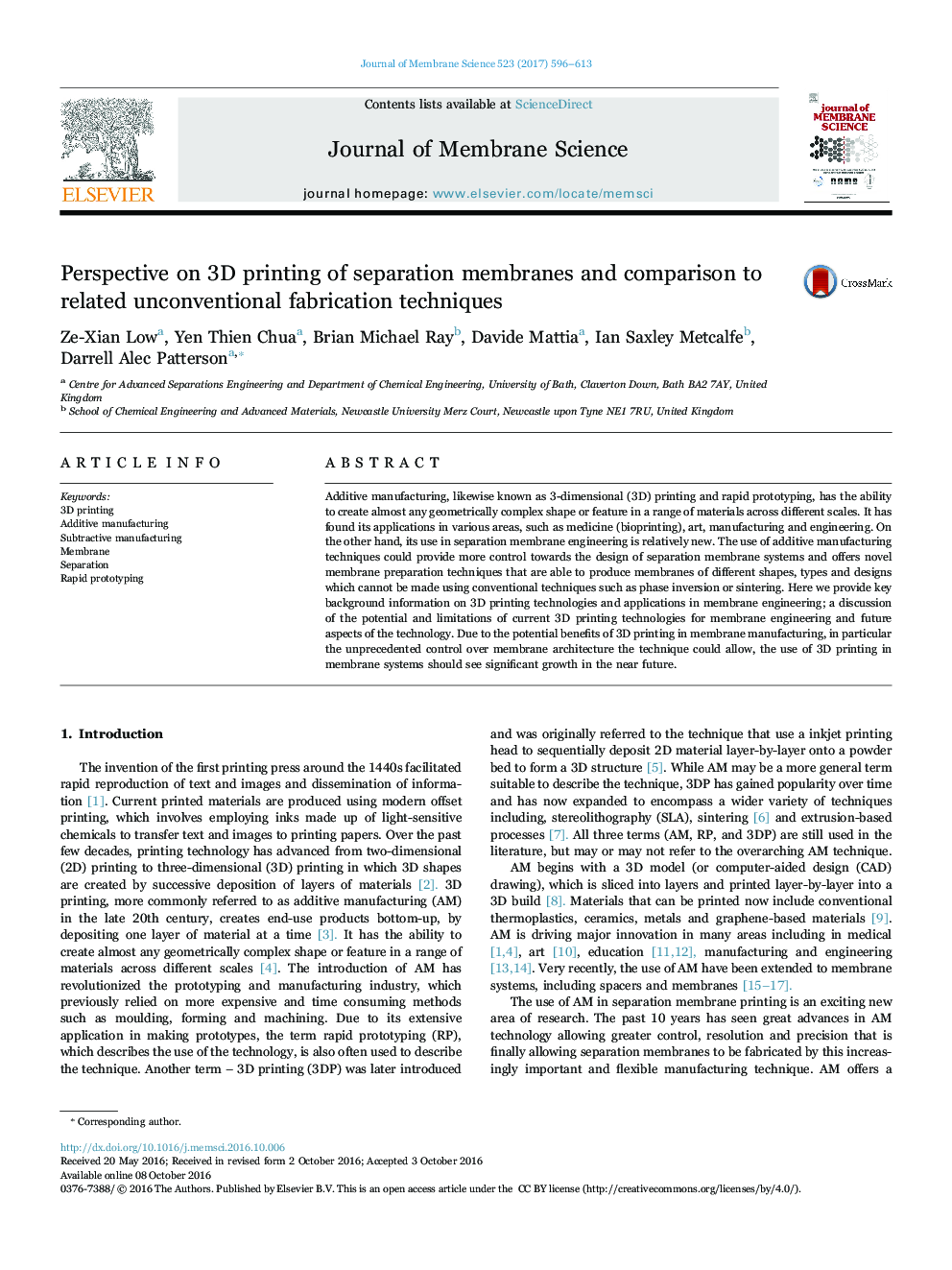| Article ID | Journal | Published Year | Pages | File Type |
|---|---|---|---|---|
| 4989088 | Journal of Membrane Science | 2017 | 18 Pages |
Additive manufacturing, likewise known as 3-dimensional (3D) printing and rapid prototyping, has the ability to create almost any geometrically complex shape or feature in a range of materials across different scales. It has found its applications in various areas, such as medicine (bioprinting), art, manufacturing and engineering. On the other hand, its use in separation membrane engineering is relatively new. The use of additive manufacturing techniques could provide more control towards the design of separation membrane systems and offers novel membrane preparation techniques that are able to produce membranes of different shapes, types and designs which cannot be made using conventional techniques such as phase inversion or sintering. Here we provide key background information on 3D printing technologies and applications in membrane engineering; a discussion of the potential and limitations of current 3D printing technologies for membrane engineering and future aspects of the technology. Due to the potential benefits of 3D printing in membrane manufacturing, in particular the unprecedented control over membrane architecture the technique could allow, the use of 3D printing in membrane systems should see significant growth in the near future.
Graphical abstractDownload high-res image (334KB)Download full-size image
